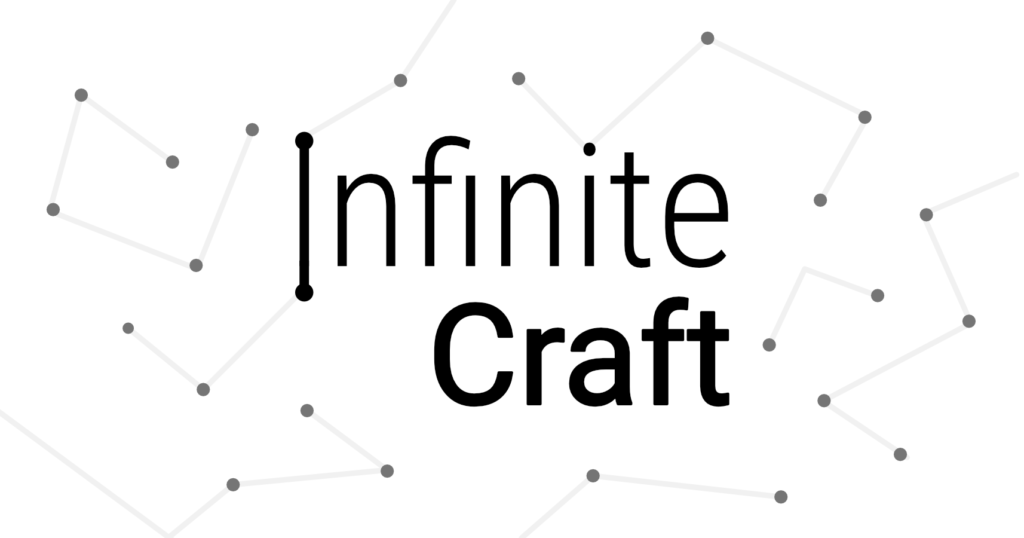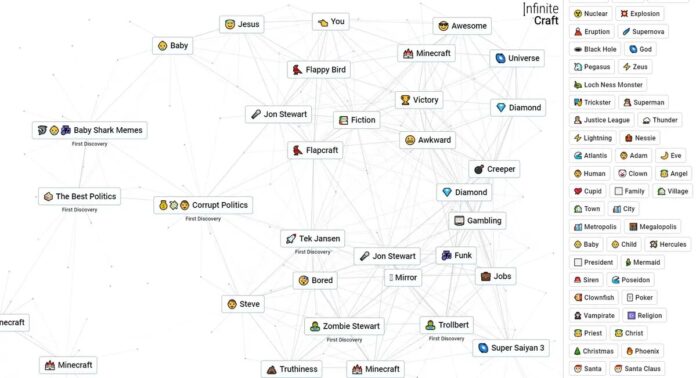Introduction
In an era where creativity knows no bounds, the concept of “Infinite Craft” emerges as a revolutionary approach to artistic and creative endeavors. This idea transcends traditional methods, inviting artists, designers, and innovators to explore limitless possibilities. Whether you’re a seasoned professional or an enthusiastic novice, understanding and harnessing the power of Infinite Craft can elevate your work to unprecedented heights. This article delves into the essence of Infinite Craft, its implications, and how you can apply its principles to your creative projects.
What is Infinite Craft?
Infinite Craft refers to the practice of engaging with creativity in a way that recognizes and embraces an ever-expanding horizon of possibilities. Unlike conventional methods that often operate within set boundaries or predetermined rules, Infinite Craft encourages a fluid and dynamic approach. It’s about continually pushing the limits of your imagination, exploring new techniques, and integrating diverse influences to create something truly unique.
The Evolution of Craftsmanship
Craftsmanship has evolved significantly over the centuries. From ancient pottery and weaving to modern digital arts and design, the essence of crafting has remained rooted in skill and innovation. However, as technology and societal perspectives shift, the definition of craftsmanship continues to expand.
- Traditional Craftsmanship: Historically, craftsmanship was tied to manual skills and artisanal techniques. Whether it was the intricate carvings of Renaissance artisans or the finely tuned skills of blacksmiths, traditional craftsmanship emphasized mastery over a specific medium.
- Modern Craftsmanship: With the advent of technology, modern craftsmanship has seen the integration of digital tools and methods. Graphic designers use software to manipulate visuals, and digital sculptors create 3D models that push the boundaries of physical material constraints.
- Infinite Craftsmanship: Enter Infinite Craft, where the focus is not just on mastering a single technique but on continually exploring and expanding creative possibilities. It’s about blending traditional skills with modern innovations and always seeking new ways to express and execute ideas.
The Principles of Infinite Craft
To embrace Infinite Craft, consider these key principles:
- Exploration and Experimentation: Infinite Craft is rooted in a willingness to explore and experiment. Don’t be afraid to try new techniques, materials, or styles. The more you experiment, the more you’ll discover what resonates with your creative vision.
- Integration of Diverse Influences: Draw inspiration from various sources. Combining elements from different cultures, disciplines, or eras can lead to innovative results. For instance, blending classical art techniques with contemporary digital media can yield unique outcomes.
- Continuous Learning: The creative field is ever-evolving. Staying updated with new tools, trends, and techniques is crucial. Attend workshops, take online courses, and engage with other creatives to keep your skills and knowledge fresh.
- Flexibility and Adaptability: As you delve into Infinite Craft, you’ll encounter challenges and changes. Being flexible and adaptable allows you to overcome obstacles and continuously evolve your craft.
- Collaboration: Working with others can provide new perspectives and ideas. Collaborating with individuals from different backgrounds or disciplines can introduce you to innovative techniques and concepts.
Applications of Infinite Craft
Infinite Craft is not limited to any particular field. Its principles can be applied across various domains, from visual arts to technology and beyond.
- Visual Arts: Artists can use Infinite Craft principles to explore new mediums, mix different art forms, and challenge conventional artistic boundaries. For example, combining traditional painting with augmented reality can create immersive experiences for viewers.
- Design: Designers can apply Infinite Craft by experimenting with unconventional materials or incorporating unexpected elements into their work. This approach can lead to groundbreaking designs that stand out in the market.
- Technology and Innovation: In technology, Infinite Craft encourages the development of novel applications and tools. Think of how advancements in AI and machine learning are continuously pushing the envelope of what technology can achieve.
- Writing and Literature: Writers can leverage Infinite Craft by exploring new narrative techniques, blending genres, and experimenting with different storytelling methods. This approach can lead to fresh and engaging literary works.
Challenges and Considerations
While Infinite Craft offers exciting opportunities, it also presents challenges:

- Overwhelm: The vastness of possibilities can be overwhelming. It’s important to focus on your core goals and interests to avoid spreading yourself too thin.
- Balance: Striking a balance between experimentation and mastery is crucial. While exploring new techniques, ensure that you’re also honing your core skills.
- Feedback and Critique: As you explore new directions, seeking feedback from others can be valuable. Constructive criticism helps refine your work and guide your creative journey.
Case Studies of Infinite Craft in Action
- Case Study 1: The Fusion of Traditional and Digital Art
- A renowned artist, Sarah Kim, combines traditional painting techniques with digital tools to create hybrid artworks. Her pieces blend the texture of oil paints with the dynamic effects of digital manipulation, resulting in captivating and innovative art.
- Case Study 2: Innovative Product Design
- Design firm Morphosis has utilized Infinite Craft principles to develop cutting-edge products that challenge traditional design norms. Their approach often involves integrating unexpected materials and technologies to create functional and visually stunning designs.
- Case Study 3: Experimental Writing Techniques
- Author David Mitchell employs Infinite Craft principles in his novels by blending genres and experimenting with narrative structures. His work, characterized by complex storytelling and genre-blending, showcases the power of pushing creative boundaries.
Conclusion
Infinite Craft represents a paradigm shift in how we approach creativity and artistry. By embracing exploration, integration, and continuous learning, you can push the boundaries of your craft and achieve extraordinary results. Whether you’re an artist, designer, or innovator, adopting the principles of Infinite Craft can unlock new dimensions of creativity and lead to groundbreaking work. Embrace the infinite possibilities, and let your creative journey be limitless.



